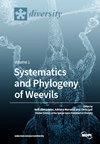What Insight Does the Alien Plant Species Richness in Greece Offer for the Different Invasion Biology Hypotheses?
IF 2.1
3区 生物学
Q2 BIODIVERSITY CONSERVATION
引用次数: 0
Abstract
Biological invasions are one of the main threats to biodiversity, but they also offer insights on different ecological processes, as highlighted by the hypotheses posited to explain the phenomenon. We explore the relative importance of different hypotheses using biotic (native diversity) and abiotic factors (climate and landscape configuration) as proxies driving the spatial pattern of alien plant biodiversity in Greece. The strongest predictor of alien species richness is native species richness. Landscape heterogeneity boosts this relationship, but native and alien species prefer different conditions. Landscape composition and configuration explain more of the variance of alien diversity than of native diversity, with native diversity increasing at more naturally vegetated areas and alien diversity at agricultural lands. Climate is associated more strongly with native diversity than with alien diversity, with native diversity increasing in colder regions and alien diversity in warmer regions. The transportation network was associated with higher alien species richness but not with native species richness, highlighting the importance of propagule/colonization pressure. These differences might indicate that aliens occupy part of the niche space that is not preferred by the natives and thus allow us to speculate on the role of limiting similarity as a driving force.希腊外来植物物种丰富度为不同的入侵生物学假说提供了什么启示?
生物入侵是对生物多样性的主要威胁之一,但它们也提供了对不同生态过程的见解,正如解释这一现象的假设所强调的那样。我们使用生物(本地多样性)和非生物因素(气候和景观配置)作为驱动希腊外来植物生物多样性空间格局的代理,探讨了不同假设的相对重要性。外来物种丰富度的最强预测因子是本地物种丰富度。景观异质性促进了这种关系,但本地和外来物种更喜欢不同的环境。景观组成和配置更多地解释了外来多样性的变化,而不是本地多样性的变化,本地多样性在自然植被较多的地区增加,而外来多样性在农业用地增加。气候与本地多样性的关系比与外来多样性的关系更强,本地多样性在寒冷地区增加,外来多样性在温暖地区增加。运输网络与较高的外来物种丰富度相关,而与本地物种丰富度无关,突出了繁殖体/定殖压力的重要性。这些差异可能表明,外星人占据了当地居民不喜欢的生态位空间的一部分,从而允许我们推测限制相似性作为驱动力的作用。
本文章由计算机程序翻译,如有差异,请以英文原文为准。
求助全文
约1分钟内获得全文
求助全文
来源期刊

Diversity-Basel
Environmental Science-Ecological Modeling
CiteScore
3.40
自引率
12.50%
发文量
925
审稿时长
11 weeks
期刊介绍:
Diversity (ISSN 1424-2818) is an international and interdisciplinary journal of science concerning diversity concept and application, diversity assessment and diversity preservation. It is focused on organismic and molecular diversity. It publishes reviews, regular research papers and short notes in the regular issues. Related news and announcements are also published. Our aim is to encourage scientists to publish their experimental and theoretical results in as much detail as possible. Therefore, there is no restriction on the length of the papers. Full experimental details must be provided so that the results can be reproduced.
 求助内容:
求助内容: 应助结果提醒方式:
应助结果提醒方式:


